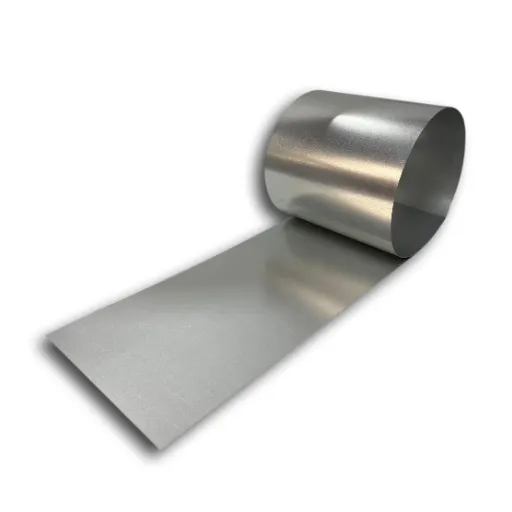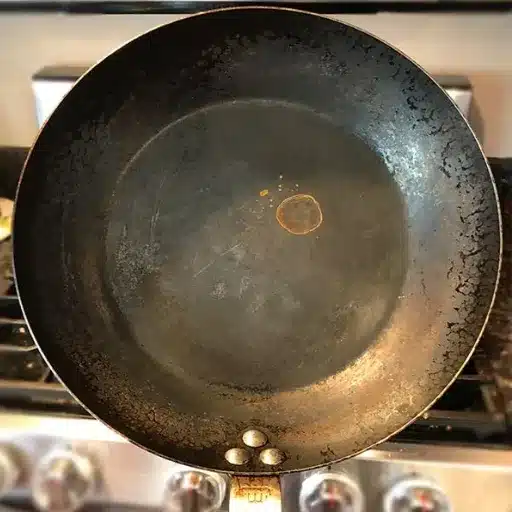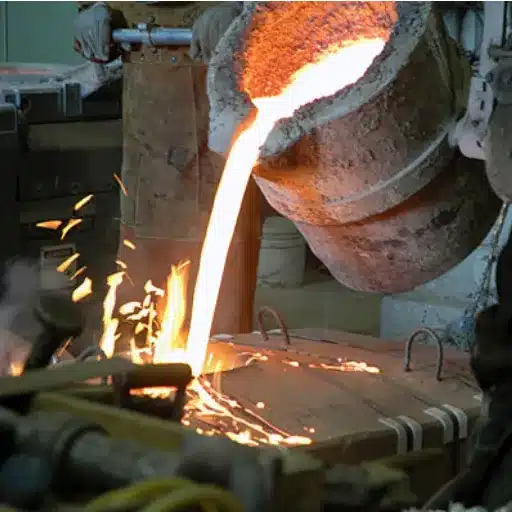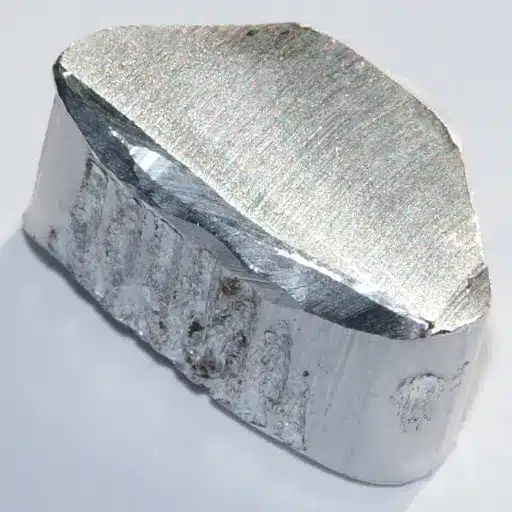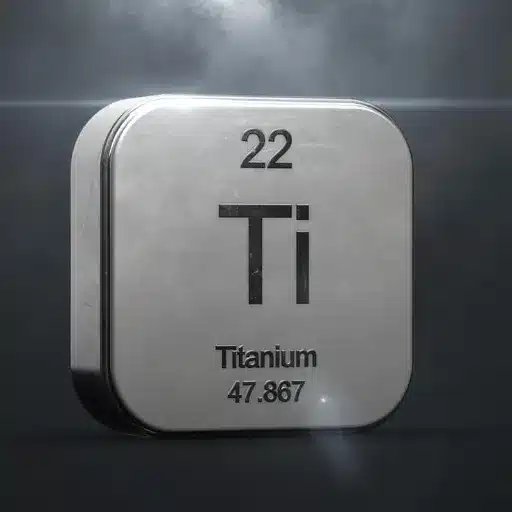As you consider the pipes for your project, one question that always seems to pop up is whether to go for seamless or welded pipes. Each pipe serves its purpose as a result of its unique welding process, strengths, as well as joints of their ideal applications. Nonetheless, knowing which option aligns well with your requirements demands a thorough examination of their pros and cons. This article aims to detail the benefits, downsides, and advantages of seamless vs welded steel pipes so you can come to a useful conclusion. If you are involved in construction, oil and gas, or any other field, this article will serve you well in making the proper decision in regard to the stitch you use for your application.
What’s the Difference Between Seamless and Welded Pipe?
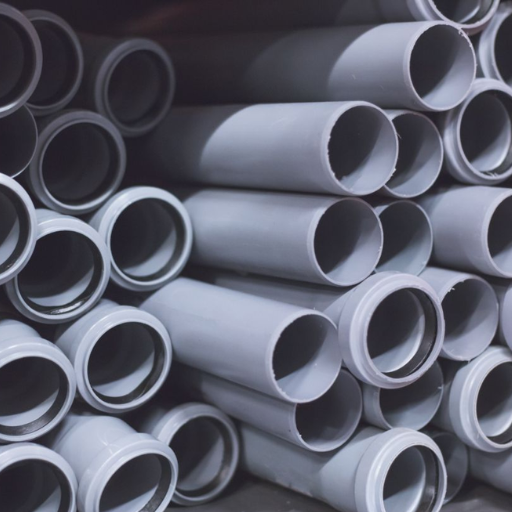
Seamless pipes are created through the extrusion of solid steel into tubular sections. Pipes like this are free of any obtainable welded joints which are an important feature in all plumbing systems. As a result, seamless pipes have no welded seams on the surface which makes the structure homogenous. Seamless pipes are ideal for applications subjected to high-pressure and temperature conditions as they are less likely to fail under extreme stress.
Welded pipes are manufactured from steel plates by rolling them and welding their edges. This method makes them cheaper to produce and more readily available in larger diameters than seamless pipes. However, the welded seam reduces their ability to withstand extreme conditions, making seamless pipes more durable and requiring less inspection for use in constrained applications.
The selection of seamless and welded pipes focuses on different aspects like budget constraints, application needs, and pressure and temperature levels.
Manufacturing Process: How Each Pipe Type is Made
Seamless Pipes
Making seamless pipes includes a series of processes aimed at removing any welded seams for a homogeneous structure. It begins with solid billets usually composed of steel or some other alloys, which are heated to extremely high temperatures. The heating process pierces a hollow cylinder out of the billet using a mandrel. Followed by rolling and or extrusion process to achieve elongation, width, and other diameter modifications to meet the desired specifications. This strengthens seamless pipes to higher pressure and extreme conditions without compromising structural integrity. Data from the industry claims seamless pipes are especially dominant in power plants, chemical power plants, and oil and gas drilling because of their structural strength and durability.
Welded Pipes
Welded pipes are manufactured by taking either steel sheets or plates, forming them into either a rectangle or circle and welding the edges along the line to create a continuous spiral seam. Modern welding methods such as electric resistance welding or ERW and high-frequency welding or HFW ensure the seam can withstand typical operational stresses. The pipe welded seam is done as economical as possible compared to seamless pipes allowing longer lengths and larger diameter welds. Improved methods for nondestructive testing (NDT) have recently made welded seams more reliable which makes welded pipes useful for applications not under extreme pressure such as water lines and structural support members. For other industrial needs, welded pipes can be more affordable while giving industry standards with functionality.
Both manufacturing methods keep getting adopted with modern technology, offering optimized functioning and meeting a wide range of industrial standards. Every kind of pipe possesses its certain benefits and it all depends on what the operating environment is and what the budget is set out to be.
Structure and Appearance: Identifying Weld Seams vs Hollow Billets
Welded pipes can be distinguished both visually and structurally from seamless pipes due to the steps taken in creating them. In cases of welded pipes, there is a seam that runs along the length of the pipe, which forms as a result of welding the two edges together. This seam is usually machined so that it is smooth and consistent, as well as polished for uniformity, but even with modern photographic methods, the weld seam will still be identifiable. In terms of pipes, they exhibit better and more uniform thickness when compared to other pipes of the same type.
Seamless pipes, however, are made from a single solid cylindrical billet of metal. The metal is then subjected to heating, making it easier to stretch into a hollow pipe. This procedure results in a pipe with a smooth surface without evidence of a welding seam. In the absence of a seam, the pipes have increased tensile strength while being able to withstand increased pressure. Seamless pipes are best used in situations where extremely high pressure is used, such as the oil and gas industry or chemical processing.
Research suggests that seamless pipes tend to outperform welded pipes in structural strength. For example, seamless pipes of a given diameter and wall thickness were shown to withstand greater pressure (20-30%) than their welded counterparts. Welded pipes, however, are cheaper and useful where cost is a priority and extreme pressure is not critical. Their accuracy of measurement and standardization into many sizes also makes them useful for numerous consumers not need seamless construction.
Modern methods of innovation and testing, such as ultrasonic or even radiographic testing, have improved significantly the capability to detect and evaluate weld seams and hollow billets, guaranteeing performance with the intended use. This makes it possible for industries to decide the type of pipe to purchase depending on the defined structural and functional requirements.
Basic Quality Differences Between the Two
While comparing seamless pipes and welded pipes, some differences about their quality arise which are important for their respective uses. Pipes without a seam, unlike those that are welded, are usually regarded as stronger and more resistant to pressure because they have a uniform structure. This makes them perfect for high-pressure conditions, such as in the case of oil and gas exploration, power generation plants, and chemical processing.
On the contrary, welded pipes are appreciated for being cheaper and also range much larger in diameter. The structural soundness of welded pipes has been elevated by some industrial changes such as automatic submerged arc welding which has reduced weaknesses in the weld seam area. Nevertheless, these pipes welded together may not stand up to high pressure and extreme temperature situations as well as seamless pipes do.
Industry-standard statistical data proves that seamless pipes tend to outperform in pressure endurance capabilities, in certain applications of high stress, up to 20% more than welded pipes. Moreover, seamless pipes withstand erosion better than welded pipes, especially in erosive environments due to the absence of a seam, which is regarded as a weak point, weld seam.
We should also pay attention to the importance of manufacturing methods. Production of seamless pipes includes rotary piercing and extrusion. For welded pipes, plate or strip material is rolled, and then the pipe is welded joined. Both types undergo stringent quality testing such as ultrasonic testing or eddy current testing for seamless pipes and radiographic testing for welded pipes.
Ultimately, the decision rests on the growing concern of cost, performance expectations, and application requirements, with seamless pipes dominating high-risk environments while welded pipes offer moderate application solutions.
When Should You Choose Seamless Steel Pipe Over Welded Pipe?
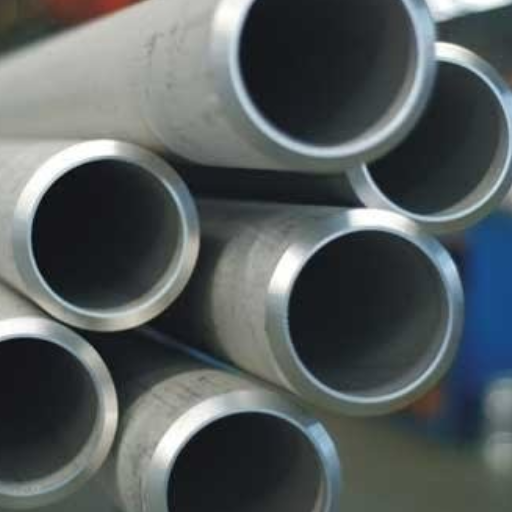
Seamless steel pipes are the best option for applications requiring high strength, durability, and pressure resistance. Such pipes are best suited for oil and gas power plants and chemical processing facilities which need to withstand young-quiescent and aged-quiescent stressed harsh temperatures and corrosive fluids, high-pressure environments, or extreme temperatures. Seamless pipes are also advantageous for the automotive and aerospace industries where uniformity and accuracy in shape and size are a requirement. In cases where performance over time and reliability are crucial, seamless pipes tend to be preferable.
High-Pressure Applications: Pressure Capacity Comparison
Seamless pipes hold internal pressure better than welded pipes due to having no seams which creates weaker points susceptible to failure. Due to built-in material consistency and uniform construction, seamless pipes provide better internal pressure application resistance over their welded counterparts.
For instance, carbon steel seamless pipes of specific sizes and wall thickness can be rated up to 10,000 psi which makes them ideal for critical systems used during petroleum extraction and high-pressure steam distribution. Such ensures welded pipes are low-confidence incompetent due to pressure rating limitation by manufacturing standards such as weld quality and utilized tests.
Research indicates that when it comes to supercritical power plants, seamless pipes perform better in preserving structural integrity during long hours of operation. Their integrity is attributed to the absence of welds, which significantly diminishes the chances of crack or fatigue failure, which can happen in extreme conditions.
Oil and Gas Industry Requirements for Seamless Pipe
Seamless pipes not only cater to high pressure and temperature, but also to vertical oil wells and highly corrosive materials such as crude oil and natural gasses as seamless pipes undergo drilling. The seamless pipes are used in refinery activities as well. The industry requires seamless pipes to have remarkable strength, precise alignment, endurance to corrosion, and smooth manufacturing processes free of gaps.
The carbon or alloy steel composition in this sector’s seamless pipes is very sensitive to high-pressure air and water bursts. The American Petroleum Industry (API) also controls these requirements in their guides, for example, API 5L requirements for line pipes have to meet set standards for yield and tensile strength along with seamless strength standards.
Data shows that the most preferred pipes for deep-sea drilling applications, where pressures may exceed 15,000 psi, are seamless pipes with a yield strength of approximately 355 MPa and a tensile strength of around 630 MPa. For offshore projects, where the marine atmosphere containing salts speeds up corrosion, alloys with molybdenum and chromium need to be in higher percentages for more corrosive resistance properties.
The precise seamless pipes quality control, including ultrasonic testing, radiograph testing, and hydrostatic tests, ensures all critical requirements of seamless pipes structural integrity are upheld. These measures help operators achieve safety, avoid leaks, and deliver the required flow rate, even under severe conditions.
Power Generation and Critical Piping Systems
To operate efficiently regarding different power generation activities, critical piping systems must be efficient in transporting fluids such as steam, water and fuel, fluids. The operating conditions, such as temperature along with pressure, of these systems endure high values while the surrounding environment is corrosive and hostile. To construct the piping components, materials such as P91, P22, carbon steel and stainless steel are selected due to their properties of efficiently enduring the surrounding challenges.
To cite an example, critical piping systems are utilized in thermal power plants to move superheated steam with a pressure value greater than 2,500 psi from the boilers to the turbines. Other industry data indicates that the steam within these systems can reach values as high as 1,200°F (650°C). This information proves the demanding nature of engineering along with robust materials.
The lifespan of critical piping systems is greatly enhanced by modern developments for Non-Destructive Testing (NDT) along with foresight in maintenance. To cite an example, ultrasonic phased array testing combined with emission monitoring and infrared thermography are conducted to measure the amount of fatigue, corrosion or even leaking present, thus making it possible to prevent potential failure.
Additionally, as part of eco-friendly energy projects, some critical piping systems are being developed for the optimization on renewable energy plants. For example, concentrated solar power (CSP) plants use specialized pipes to transport molten salts at above 1,000°F (540°C), permitting energy storage and transport. These developments demonstrate the changing functions of critical piping systems as the world works towards cleaner energy alternatives.
Corrosion Resistance: Seamless vs Welded Pipe Performance
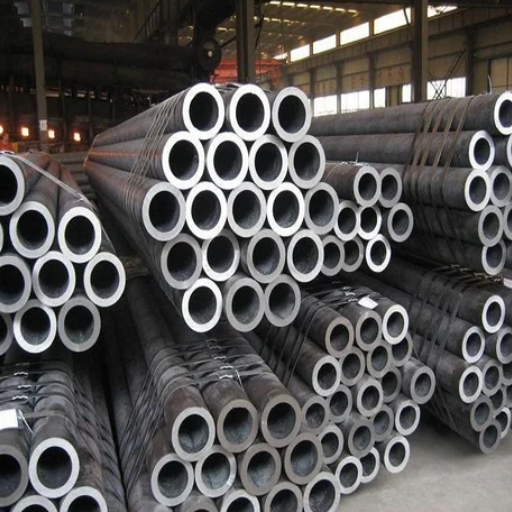
Seamless pipes are known to perform better with corrosion because of their smooth, uniform shape. They do not have weld seams, which under certain conditions could be weak points. Welded pipes, on the other hand, are normally protective and treated to resist corrosion. These welded pipes do have a welded seam that can be more susceptible to welded corrosion. The right material, protective coating, and environment all greatly influence each type of pipe’s performance with corrosion. Permanent strength against pipes in corrosive environments is usually attributed to seamless pipes, but more modern advances in welding and coating have often improved welded pipes.
How Weld Seams Affect Corrosion Resistance
because of the heating and cooling phases during the welding process, weld seams are areas where the material properties differ from the base metal and they are crucial for the corrosion resistance of welded pipes. If not properly managed, the heat-affected zone (HAZ) microstructure changes near the weld can lead to diminished corrosion resistance. For example, stainless steel pipes are sensitization HAZ prone wherein chromium carbide precipitation turns a metal’s protective oxide layer useless making it more vulnerable to corrosion.
Laser and electron beam welding are modern welding techniques that combat these issues by minimizing the alteration of the workpiece’s structure; post-weld annealing, passivation treatments, and restoring corrosion resistance are also performed. Those pipes, according to industry data, can in most cases be regarded as seamless pipes in terms of corrosion performance. To be more effective, welded pipes are additionally reinforced by stronger coatings and alloying elements such as molybdenum and nickel to withstand corrosive environments with high concentrations of chloride like seawater or chemical processing plants.
As we already discussed, the choice between seamless and welded pipes depends on the specific environmental and operational conditions. For instance, seamless pipes are traditionally preferred owing to their uniformity and resistance to stress concentration along the pipe’s length. However, advances in production and treatment processes have considerably closed the gap between welded and seamless pipes concerning corrosion resistance.
Material Considerations: Carbon Steel and Alloy Steel Options
Having comparison knowledge of carbon steel and alloy steel would ensure an informed decision on which to select.
Carbon Steel: This type of steel alloy mostly consists of iron and carbon, along with small amounts of other alloying elements. The economic value of carbon steel makes it very popular alongside durability and versatility. The carbon steel’s mechanical strength makes it appropriate for high-pressure applications. Some of the used grades are ASTM A106 along ASTM A53 which are commonly used in the oil a gas sector for pipelines as well as construction and structural components. Carbon steel does have its shortcomings as it cannot withstand corrosion without some protective coatings or treatments.
Alloy Steel: This type of steel adds certain elements such as chromium, molybdenum, nickel, and vanadium. The addition of new materials makes the steel stronger when it comes to corrosion, temperature, and increased overall durability. Certain grades like ASTM A335 are well suited for aggressive thermal and chemical environments and are widely utilized in power plants and chemical industries. The rest of the alloy steels become very useful when there is an increased practicality with hardenability, wear resistance and demanding industrial applications.
Key Data Points:
- Strength: Alloy steel typically has a higher tensile strength than carbon steel, with values ranging from 70 ksi to over 100 ksi depending on composition and heat treatment.
- Corrosion Resistance: While carbon steel requires external protection, alloy steels with chromium content above 12% offer inherent anti-corrosion properties.
- Operating Temperatures: Alloy steel can endure temperatures well over 500°F, whereas carbon steel generally performs best below this threshold.
In the end, deciding whether carbon steel or alloy steel is used relies on mechanical strength, the work environment, and overall cost. Choosing the right material guarantees safety and optimal performance in harsh industrial applications.
Strength and Durability Comparison of Steel Pipe Types
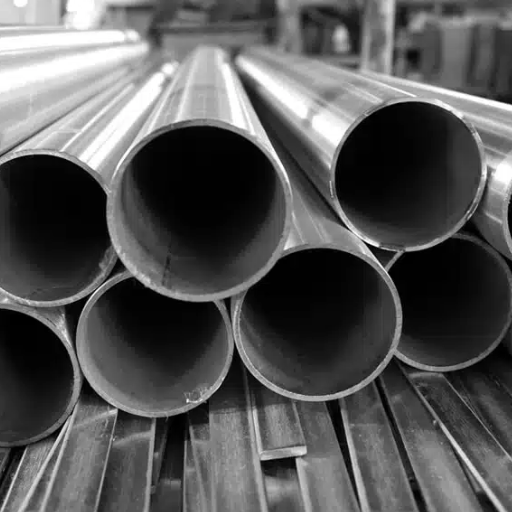
Seamless pipes are considered stronger and have higher pressure resistance because there is no weld seam. This makes them the best choice for usage that needs full structural support. Welded pipes, however, are great dependable pipes for medium-pressure use them due to advanced welding techniques provide them with added strength. Both types are reliable, but the selection is mostly dependent on the used conditions and the required parameters of performance.
Wall Thickness Consistency in Seamless vs Welded Pipe
Wall thickness uniformity is one of the main comparison factors for seamless and welded pipe due to it affecting the geometry and functionality of the pipes. Due to the extrusion and rotary piercing manufacturing processes, seamless pipes provide better wall thickness uniformity This is because of the absence of the welding’s variability. Tolerances on modern-produced seamless pipes are highly controlled, often more than meeting ±12.5% requirements of OST A106 or A53 standards, which make them ideal for uses where strict measurements are needed.
Welded pipes, on the other hand, undergo the welding process, which involves heating and cooling, and this may cause some “welding discrepancies” such as less wall uniformity along the weld seam. Still, modern manufacturing processes have greatly reduced these discrepancies. Also, cold-forming techniques as well as non-destructive testing prove that welded pipes can maintain uniform wall thicknesses with robust tolerances like seamless pipes, sometimes even exceeding specifications A249 or A312.
As for fluid transport requiring extreme wall thickness uniformity, seamless pipes fulfill these requirements most of the time. However, for other applications, welded pipes are cheaper and more dependable, especially with recent enhancements in fabrication processes.
Impact of Manufacturing Process on Pipe Strength
Pipes are characterized by strength, durability, and performance, and these are largely determined by the manufacturing procedure adopted which significantly affects the material selected due to various applications. Seamless pipes benefit from being devoid seam, and lack of welded joints, which provides seamless pipes, greater uniformity, and strength, fully controllable. The absence of a seam weakens pipes due to the presence of numerous weak points. Thus, seamless pipes can bear high pressures and more extreme mechanical stresses, like those experienced within the oil and gas industry, power generation, and many others.
More recently, the strength and dependability of welded pipes have greatly improved due to advancements in welding technology. High-frequency welding (HFW) and submerged arc welding (SAW) guarantee excellent weld quality, and research indicates that the tensile strength of modern welded pipes often equals, and in some cases surpasses, the strength of seamless pipes provided certain conditions are met. For example, compliance with modern standards such as ASTM and API entails rigorous post-weld heat treatment (PWHT), which enhances the pipe’s strength by refining the microstructure and removing unwanted stresses.
Industry reports suggest that welded pipes are prevalent now for medium-pressure applications due to improved regulations and cost efficiency. Welded pipes featuring multi-layer welding systems, for instance, have demonstrated yield strengths in excess of 400 MPa, which renders them suitable for many structural and mechanical applications. Although seamless pipes continue to be used in ultra-critical scenarios, the widening gap in performance between the two options means selection now primarily depends on the specific use and the required pressure rating.
Cost Analysis: Is Seamless Steel Pipe Worth the Higher Price?
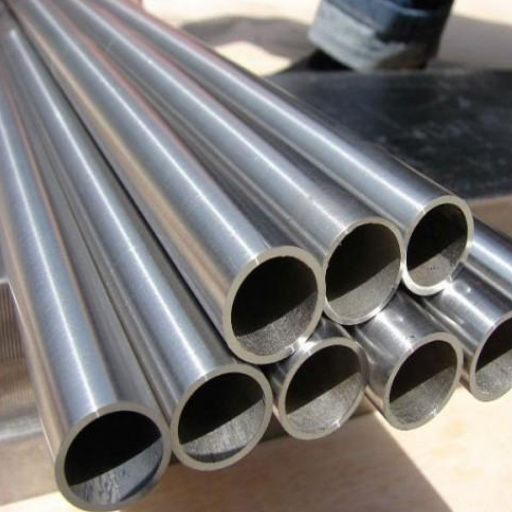
The expense linked to seamless steel pipes is advantageous in particular scenarios where its benefits are crucial. Seamless pipes are advantageous in power generation, oil and gas, and chemical processing industries due to their high-pressure and corrosive temperature reliability. In less critical applications, medium-pressure and temperature-welded steel pipes perform superbly at a significantly lower cost. As a result, the choice lies with the demanding project criteria and the desired performance versus cost performance matrix.
Initial Investment vs Long-Term Value
When analyzing the selection of seamless against welded steel pipes, remember that cost is one factor. The other is long-term benefits which arise from value addition over time. They are more expensive than welded pipes due to the intricate manufacturing processes involved, making the price 20 to 30 percent higher. Despite the consequences, seamless pipes offer superior strength and durability and need less maintenance and replacement in the long run. This fact makes them highly economical when used in highly corrosive or harsh conditions where dependability is essential.
On the other side of the spectrum, welded steel pipes have lower prices because of the simpler production methods, thus, offering a short-term advantage. These pipes are well accepted within the field for moderate pressure and less aggressive environmental conditions. For budget-constrained projects, the lower pricing of welded pipes can be quite advantageous. That said, if the changing scenarios or increasing demands may render the increased maintenance expenditure and shorter service lifespan outweigh the initial benefits in the long run.
In these situations, to sustain value over the long term, such a strategy requires an approach taking into account the operating environment, tolerable pressures, scheduled maintenance intervals, and complete ownership costs during the product life span. It has been proven that purchasing an aligned product for a projected operational demand can lead to savings of 50 percent in lifecycle costs, irrespective of starting expenditure. Informed selection must focus on the initial expense and the anticipated durability and reliability of the material.
When to Save Money with Welded Pipe Types
With regard to welded pipe types, saving money is beneficial for applications where the operating pressures and temperatures are moderate, and extreme structural integrity is not critical. General-purpose applications like low-pressure fluid transport, structural supports, and non-critical industrial systems make use of welded pipes with cost-effectiveness in mind. Because these welded pipes are cheaper than seamless pipes, they are ideal for budgeted projects as they provide good value under proper conditions. However, these selected welded pipes must also be up to par in terms of safety standards and dependability.
How to Choose Between Seamless and Welded Pipe for Your Project
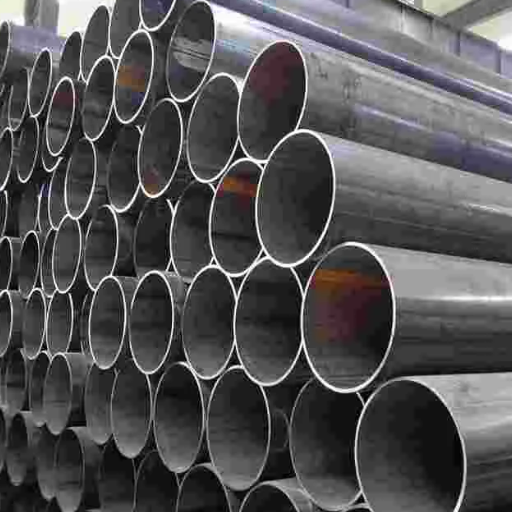
The decision on whether to pick seamless or welded pipe relies on the specific requirements of your project. Please consider these essential points:
- Pressure and Strength Requirements
Seamless pipes are better for high-pressure contexts, or where the pipe’s structural integrity is critical because of lack of seaming.
- Cost Efficiency
Welded pipes cost less and work well for low to medium-pressure fluid movement projects because they do not require extreme durability.
- Size Availability
In large-diameter projects, welded pipes tend to be easier to obtain and cheaper than seamless ones.
- Operational Environment
Welded pipes function properly under standard conditions, but might not do well in harsher environments. Seamless pipes withstand severe settings like extreme cold, heat and harsh chemicals.
Analyzing all these aspects around your finances and performance targets will help make the right selection for your project.
Industry Standards and Specifications for Different Pipe Types
When selecting between seamless and welded pipes, adhering to industry standards and specifications ensures reliability and compliance for your projects. Some of the key standards governing the production and application of these pipe types include:
- ASME B36.10 and ASME B36.19
These standards outline the dimensions, tolerances, and thickness schedules for carbon steel and stainless steel pipes, respectively. ASME B36.19 also specifies wall thicknesses suitable for seamless and welded stainless steel pipes. Ensuring adherence to these specifications is crucial for accurate installation and performance.
- ASTM Standards
The American Society for Testing and Materials (ASTM) provides widely recognized benchmarks for pipe manufacturing.
-
-
- ASTM A106 applies to seamless carbon steel pipes for high-temperature service.
- ASTM A53 allows for both seamless and welded carbon steel pipes, suitable for several applications, including mechanical and pressure purposes.
- ASTM A312 governs seamless, welded, and heavily cold-worked stainless steel pipes, focusing on corrosion resistance and durability in various environments.
-
- API 5L
Specifically designed for pipelines transporting oil, gas, and other fluids, API 5L establishes guidelines for both seamless and welded line pipes. The standard categorizes pipes into grades such as PSL1 and PSL2, with PSL2 requiring additional tests that guarantee higher mechanical properties and stress resistance.
- ISO Standards
The International Standards Organization (ISO) uses specifications such as ISO 3183, which corresponds with API 5L, for petroleum and natural gas transmission pipelines. Following such standards eases international relations and improves trade. It also guarantees quality irrespective of the place of origin.
- EN Standards (European Norms)
Europe incorporates EN norms like EN 10216 for pressure-use seamless steel tubes and EN 10217 for welded steel pipes. These standards encompass all aspects concerning the materials, their mechanical properties, and the necessary tests to be conducted.
- JIS Standards
The Japanese Industrial Standards (JIS) provide exhaustive detail such as in JIS G3459, which covers stainless steel pipes known for industrial and decorative use in many Asian countries and beyond.
Adherence to such standards allows consistent control of specialized parameters like the quality, performance, and safety of pipes. The decision to use seamless or welded pipes has to satisfy the aforementioned criteria alongside the application. Also, the application can be in a high-pressure, corrosive, or high-temperature environment.
Consulting with Experts on Steel Pipe Selection
Whether you are picking steel pipes for particular applications, seeking the aid of professionals can improve the processes significantly with precise tips that leverage the latest innovations and trends in the industry. Professionals with Capabilities readily available can study the project’s needs like raw materials might have physical attributes such as strength, corrosion resistance, thermal capacity, and cost-effectiveness.
As an example, stainless steel pipes like ASTM A312 TP304, and TP316 is among the best options in places where there is a need for superior corrosion resistance and long service life. Some of the latest information shows that the TP316 pipes with a higher percentage content of molybdenum do offer marine and chemical applications because they are about 20-30% more pitting and crevice corrosion resistant than TP304. In the meantime, carbon steel pipes especially the ones made under the ASTM A106 Grade B standard are more suited for high-pressure and high-temperature systems due to their strength and thermal stability.
In addition, experts can propose specific pipe coatings such as galvanization or epoxy lining to tailor specific performance in certain environments. Working from the latest professional industry guides not only allows for material selection within certain bound regulations but optimally addresses project-specific challenges too.
Reference Sources
-
Model Tests and Numerical Simulations of Grouted Connections in Offshore Wind Turbines:
- Discusses the use of seamless and welded pipes in offshore wind turbine structures.
- Highlights that seamless pipes generally offer better overall performance but may not always be available in suitable sizes.
- Methodology includes numerical simulations and model testing to evaluate pipe performance under repeated loads.
-
Prediction of Liner Wrinkling During High Strain Bending of Mechanically Lined Pipe:
- Examines the performance of seamless pipes in high-strain bending applications.
- Finds that seamless pipes typically exhibit more conservative behavior compared to welded pipes in certain mechanical scenarios.
- Methodology involves numerical predictions and experimental validation of pipe deformation under strain.
-
Weldability of High Strength Seamless Pipes for Fixed Offshore Structures:
- Focuses on the weldability and mechanical properties of high-strength seamless pipes.
- Compares the effects of different welding techniques and heat inputs on the structural integrity of seamless pipes.
- Methodology includes mechanical testing and analysis of welded joints under varying conditions.
Frequently Asked Questions (FAQs)
Q: What are the main differences between welded and seamless steel pipes?
A: The primary difference between welded and seamless steel pipes lies in their manufacturing process. Seamless pipes are made from a solid steel billet that is pierced through the center to form a hollow tube. Welded pipes, on the other hand, are made by rolling a steel plate or strip into a cylinder and then welding the seam. Welded pipes often include types such as Electric Resistance Welded (ERW) and Double Submerged Arc Welding (DSAW).
Q: What is an ERW pipe, and how is it manufactured?
A: An ERW pipe, or Electric Resistance Welded pipe, is manufactured by rolling a steel plate or strip into a cylindrical shape and then welding the edges together using electric resistance. This method is efficient and cost-effective, making ERW pipes a popular choice for many applications.
Q: How does the wall thickness of seamless pipes compare to welded pipes?
A: Seamless pipes typically have a more uniform wall thickness compared to welded pipes, as they are formed from a single piece of steel. Welded pipes may have slight variations in wall thickness due to the welding process, but advancements in technology have minimized these differences.
Q: Are seamless pipes more expensive to produce than welded pipes?
A: Yes, seamless pipes are generally more expensive to produce than welded pipes. The manufacturing process for seamless pipes involves more complex techniques and equipment, which contributes to higher costs.
Q: Which type of steel pipe has better pressure capacity?
A: Seamless pipes typically have better pressure capacity compared to welded pipes. This is because seamless pipes are manufactured from a single piece of steel, which provides greater strength and reliability under high temperatures and pressures.
Q: What is the role of a steel billet in pipe manufacturing?
A: A steel billet is a solid piece of steel that serves as the starting material for manufacturing seamless pipes. The billet is heated and pierced through the center to form a hollow tube, which is then rolled and stretched to the desired pipe size.
Q: How do pipe sizes vary between welded and seamless pipes?
A: Both welded and seamless pipes are available in a wide range of sizes. However, seamless pipes are often preferred for smaller diameters due to their better pressure capacity, while welded pipes are more commonly used for larger diameters due to their cost-effectiveness.
Q: What applications are best suited for welded steel pipes?
A: Welded steel pipes are best suited for applications where cost is a significant factor and the pressure capacity requirements are lower. They are commonly used in structural applications, water and gas transportation, and various construction projects.
Q: Why might a pipe supplier recommend seamless pipes for certain projects?
A: A pipe supplier might recommend seamless pipes for projects that require high pressure and temperature resistance, exceptional strength, and reliability. Seamless pipes are often used in oil and gas exploration, power generation, and chemical processing industries.

